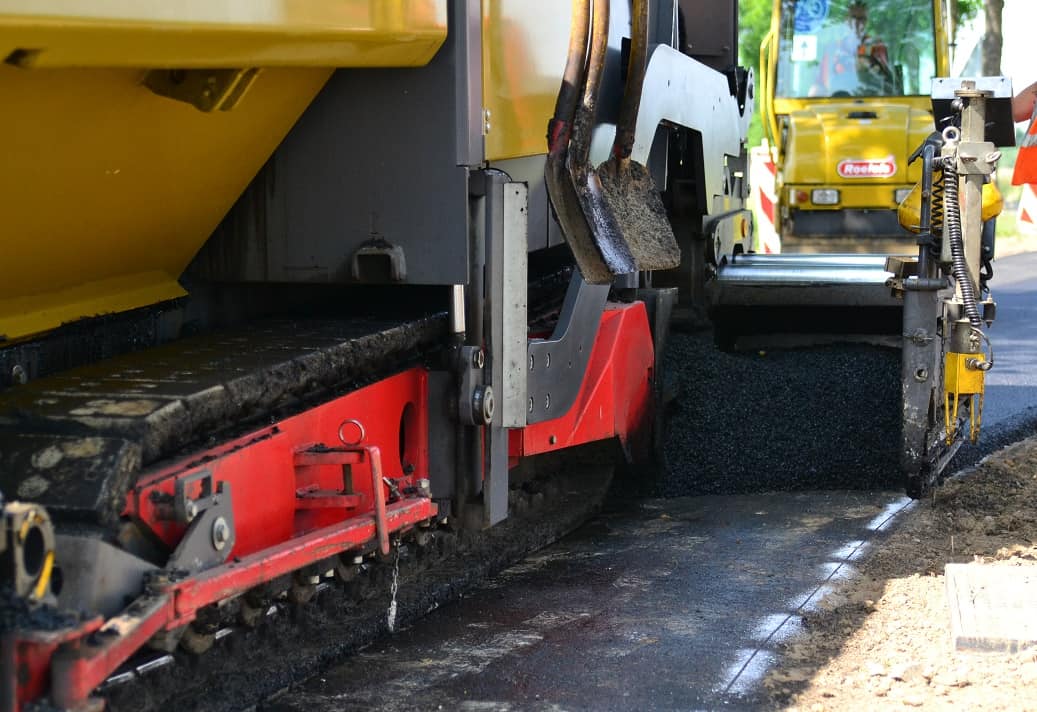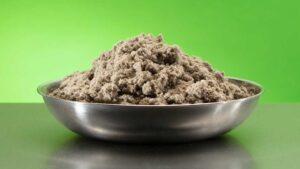The future of asphalt is green

A new future is emerging for 'green' asphalt: roads in which fossil oil and chemicals have been replaced by vegetable and circular raw materials.
The greening of road construction is unstoppable. For instance, fossil bitumen in asphalt is being replaced by bio-based lignin, circular cellulose makes the asphalt mixture more homogeneous, linseed oil from flax combined with agricultural residual flows improves the properties of asphalt and it can be processed at lower temperatures. Also, companies from Groningen are working with the Hanze University on an asphalt road that ‘eats’ CO2 from the atmosphere. Many of these developments are possible thanks to innovations from the Northern Netherlands. We shine a light on these developments in 4 articles on Sustainable Road Construction – published by Agro&Chemistry:
One of the most interesting innovations at present is the replacement of petroleum-based bitumen with organic lignin. Lignin is the ‘glue’ that holds plant fibres together in woody plants and can fulfil the same function in asphalt.

Dozens of organisations throughout the road construction chain, from raw material producers and road builders to road operators, are researching the application of lignin as part of the CHAPLIN programme.
Roelofs, a company in Stadskanaal in the Northern Netherlands, was one of the parties involved in this project from the start. A few weeks ago, the company laid a test section of the provincial road in Siddeburen with lignin-containing asphalt, near the location of green chemical company Avantium in the Delfzijl Chemical Park.
Traditional asphalt consists of a mixture of rubble, sand, aggregate and bitumen. These materials are mixed at about 150 degrees Celsius in the asphalt mixer. But a lot of energy is needed to reach these high temperatures.

By adding linseed oil and biobased residual products, such as wood chips, tree bark and flax, the temperature can be reduced significantly, to 100 degrees or even lower. Compared with traditional asphalt, this so-called Lynpave results in a 30 to 35-percent CO2 saving in the asphalt plant.
The use of linseed oil in Lynpave not only makes the asphalt more sustainable, but also stronger. ‘This saves materials and enables us to produce thinner bottom and intermediate layers that are ultimately just as strong as a thicker layer of traditional asphalt. And another advantage is that the layers cool down faster. This means we can lay several layers in one day and reduce the inconvenience to road users.’
Besides lignin, the ‘glue substance’, cellulose is also a common substance in plants. Cellulose is a natural polymer that provides strength to the plant cell walls. The material is frequently used in the pulp and paper industry.

Now, it has a useful application in asphalt as well: it can replace the less sustainable synthetic drip inhibitors. And studies by the Ashalt Knowledge Centre AKC show that it performs better, too.
The bio-based and circular cellulose for this application is supplied by the company Recell. They certainly don’t cut down any trees for this. Erik Pijlman, director of Recell: “We recover cellulose from toilet paper in sewage water, but also from industrial residues or household waste, such as drinks cartons, nappies or newspaper.
Can you make asphalt even more sustainable and if possible even CO2-negative? Yes, you can. The trick is to combine asphalt with olivine, a volcanic rock that occurs frequently in the earth’s crust.

Engineering firm PolyCiviel proves, together with Asfaltcentrale Westerbroek and students from the Hanzehogeschool Institute of Future Environments, that this is possible.
It is known that olivine breaks down CO2 under natural conditions, but this happens very slowly. When the stone is pulverised, the process suddenly accelerates. Piet Zijlstra of PolyCiviel: “When it rains and the road surface gets wet, the magnesium silicate in the stone starts a chemical reaction and magnesium bicarbonate is formed, capturing CO2 from the air. One kilo of this material absorbs about 1.25 kilos of CO2.”
In collaboration with Ohpen Ingenieurs and Oosterhof-Holman, a 60-metre-long road was laid last year in the Climate Adaptation Living Lab on the Zernike Campus in Groningen, ‘eating’ a total of more than 20 tonnes of CO2.
The asphalt has already been introduced to the market.

